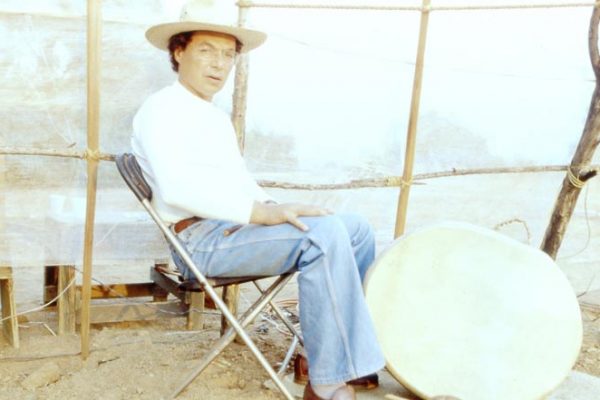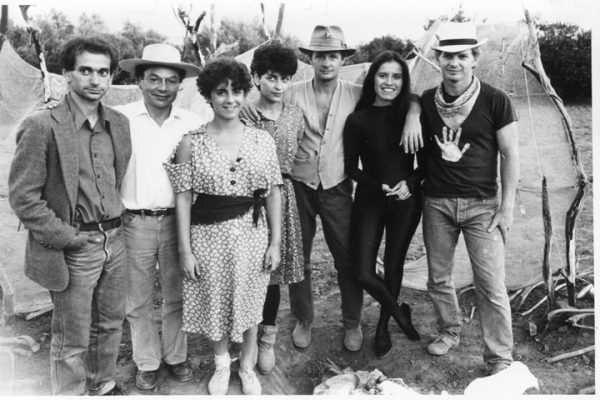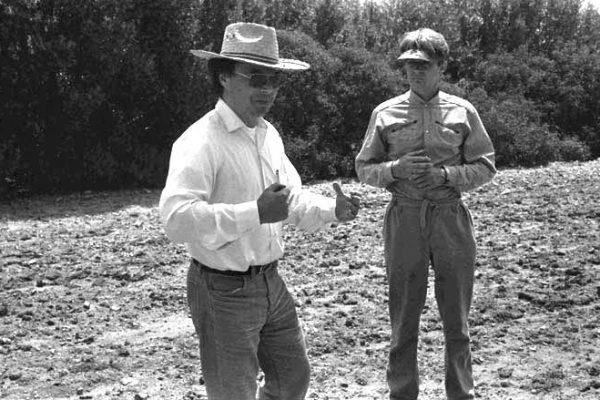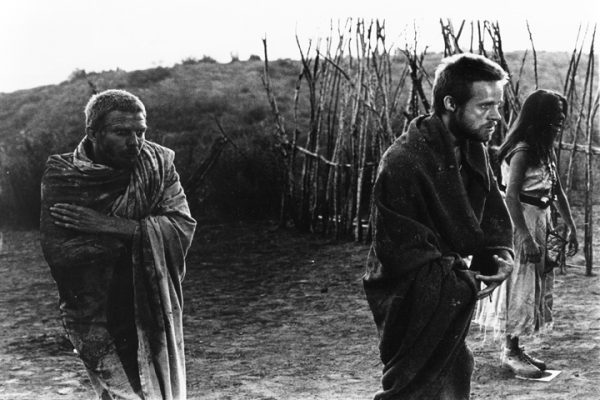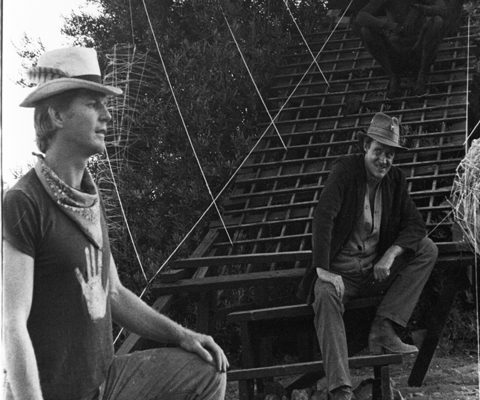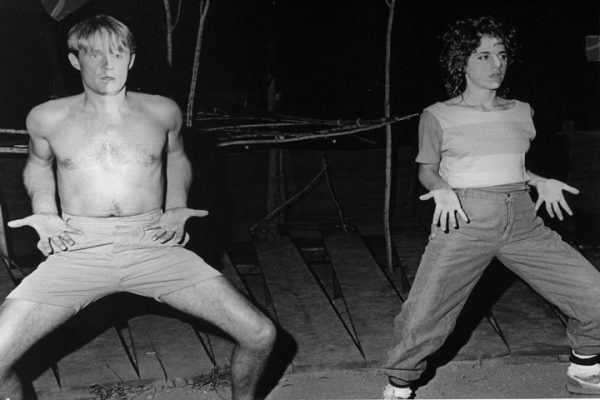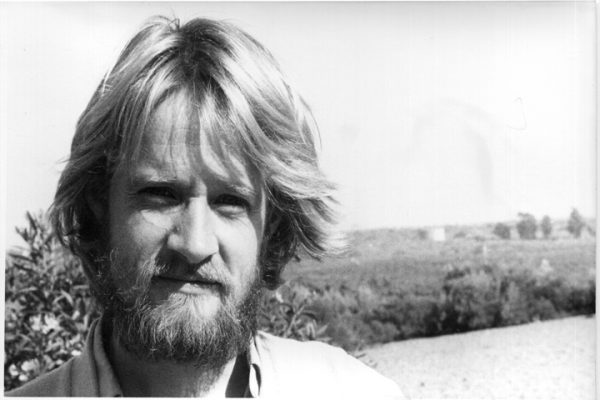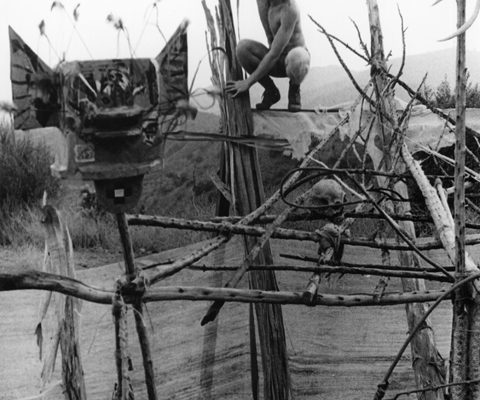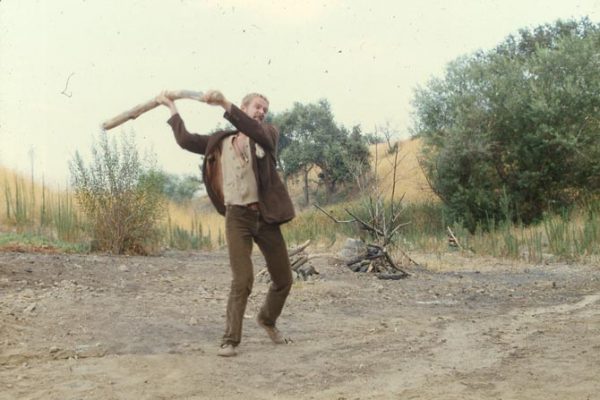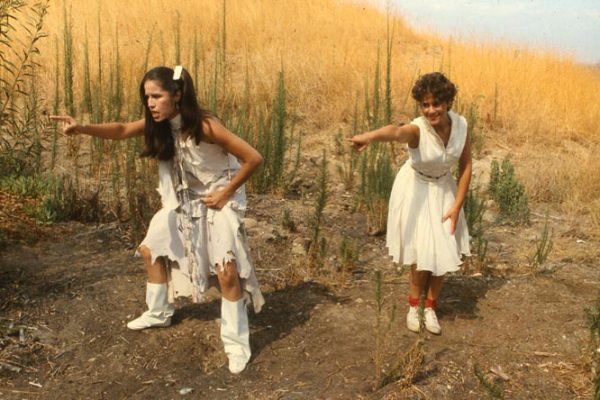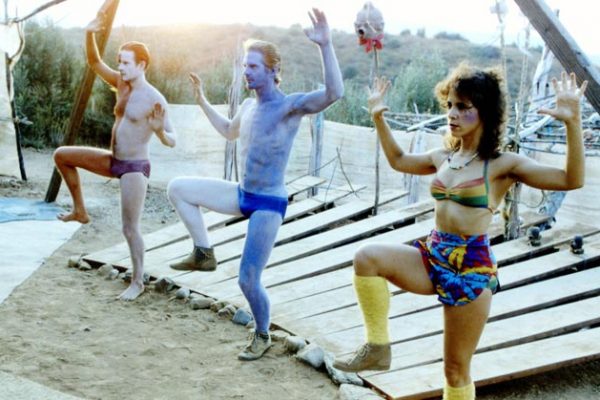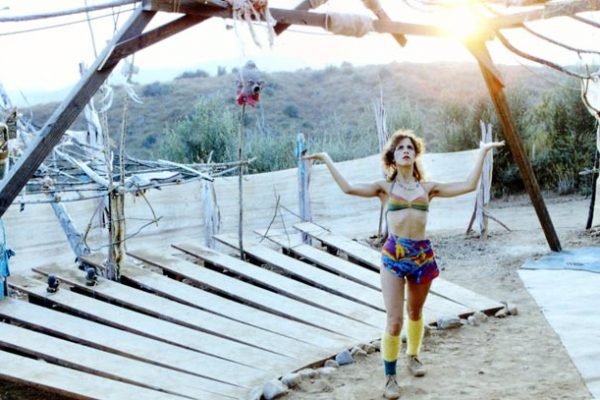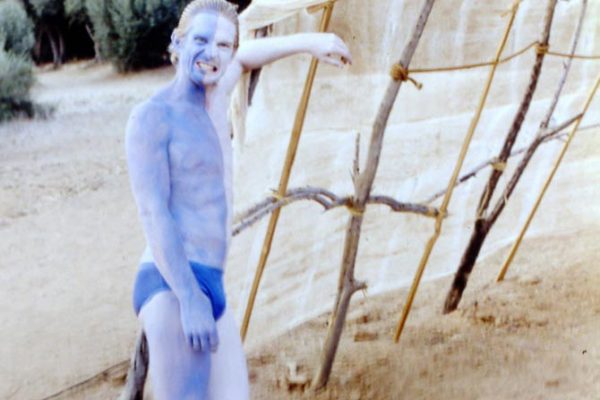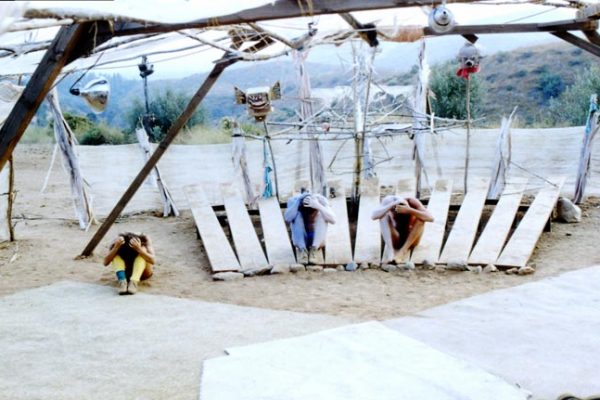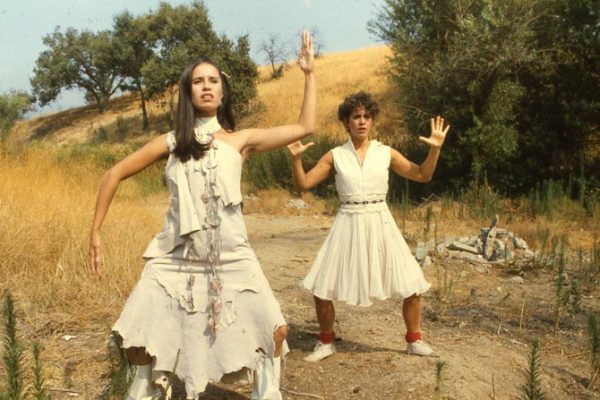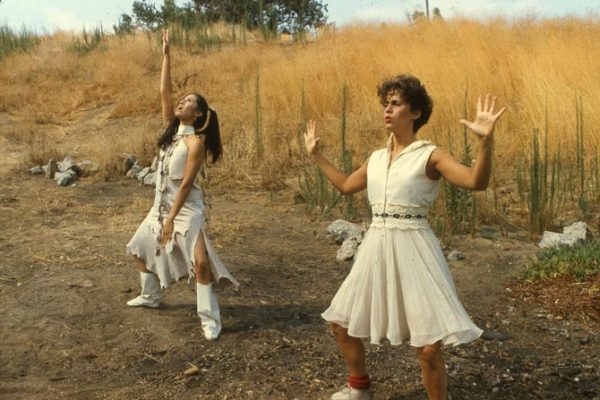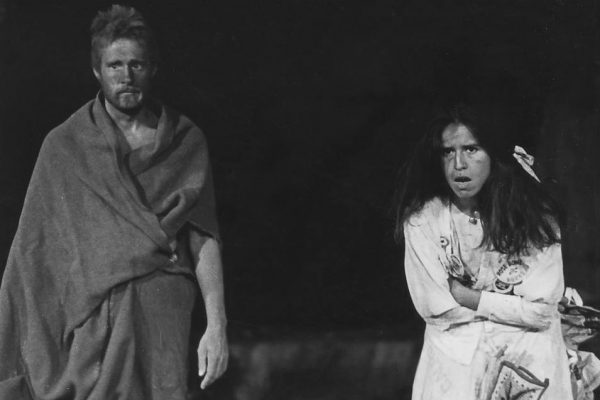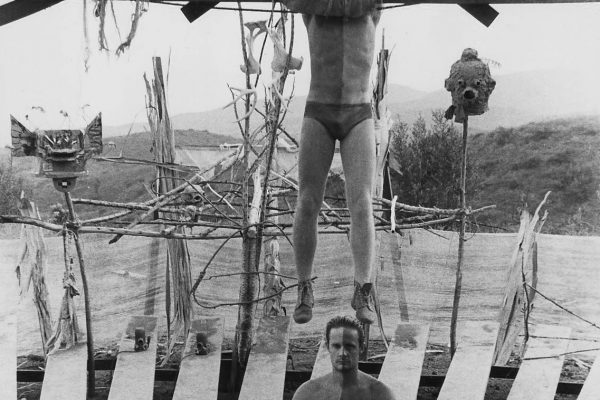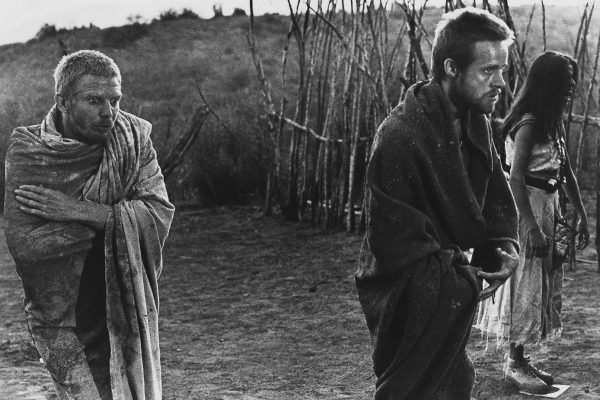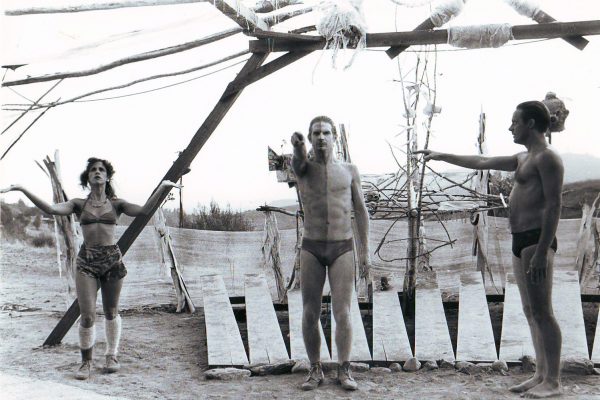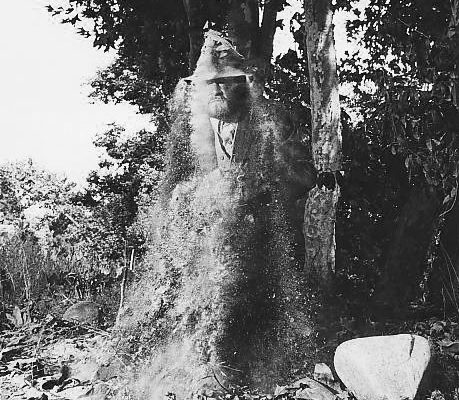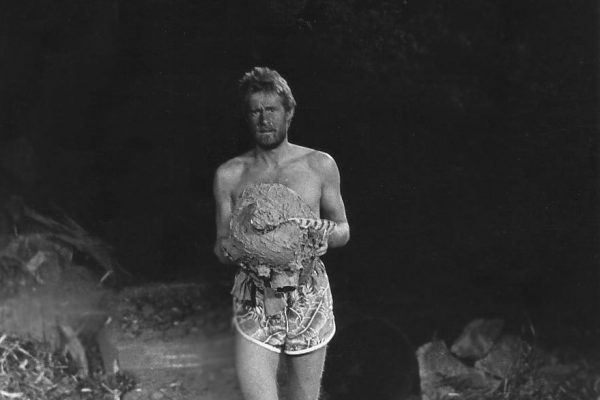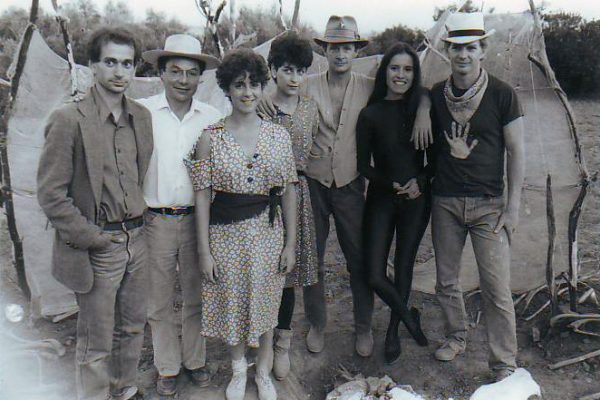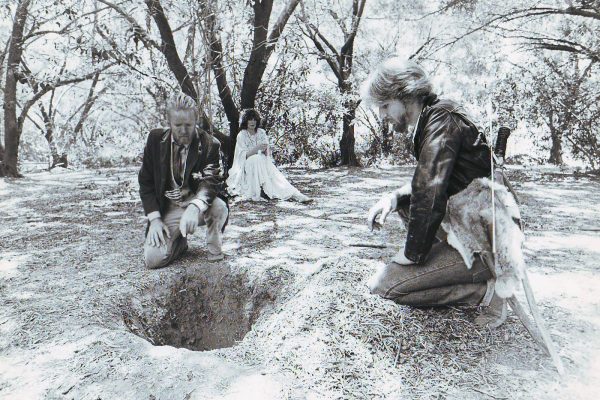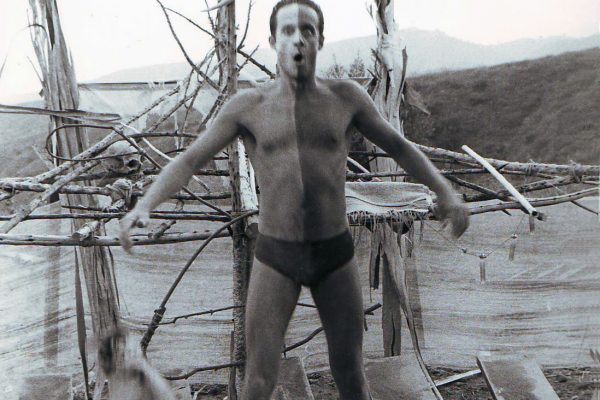Later in 2021, Padua Playwrights will complete a full length documentary film about the Coyote Cycle, Murray Mednick and his legacy.
Darrell Larson, Norbert Weisser and Murray Mednick, 1984
I. Pointing
“I first saw Part One of The Coyote Cycle in 1978 and it permanently reshaped my vision of what theatre could achieve—ritual, magic, playfulness, and respect for the playwright-actor bond entered my creative vocabulary and have been my resources ever since…in a day when much of the public has come to doubt the power of theatre, Murray Mednick’s Coyote is proof that the best of it can change lives.”
–David Henry Hwang
Murray Mednick and Norbert Weisser, 2010
II. The Shadow Ripens
“The Coyote Cycle is a magical evening of shamans and clowns, of ribald fun and mystery, a mythic journey that visits the spirits of the land and the spirits within.”
–Tim Robbins
Darrell Larson, Norbert Weisser, Priscilla Cohen, Christine Avila, Murray Mednick, 1984
III. Planet of the Spider People
“Beginning at twilight, the audience has been guided from set to set through an atavistic series of worlds where nothing is quite what it appears to be. In Planet of the Spider People, rocks speak and spider babies fly out to greet us; in Listening to Old Nana, we enter a lean-to kiva with a primitive radar station where bleached bones and abdohbe bricks make connections with the spirit world. Inside such mysterious environs, the actors make frequent startling appearances. Coyote leaps from trees like a comet hurtling from the heavens, while his cohort Trickster literally digs his way up from the bowels of the earth.”
–Cree McCree, American Theatre
Murray Mednick, Norbert Weisser, 2010
IV. Other Side Camp
“Mednick’s Coyote Cycle is a major work of American theatre, born of the land and its people – a warning and a prayer for salvation…The natural environment was essential to the work. The settings, derived from Indian designs and religious artifacts, blended with the rugged landscape…Mednick’s them was continually reiterated – ‘The harsh punishment is coming,’ warned the gods, and it is up to mankind to carry out Earth Mother’s plans. There were frequent allusions to nuclear holocaust. But the Cycle ended on a note of hope, as Coyote’s mission was fulfilled. The fusion of art and nature was magical. The audience was clearly uplifted. A sense of renewal prevailed.”
–Richard Sogliuzzo, National Public Radio
Darrell Larson, Norbert Weisser, Priscilla Cohen, Christine Avila, Murray Mednick, 1984
V. Listening to Old Nana
“What Mednick is after is nothing less than an ecological view of existence. It infuses everything, from the constant web-image to the physical rocess of actor and audience involvement…links are made between the Gailic Mabinogion, the Native American myths and and Icelandic sagas. The work is rife with Westernisms as well. But Mednick takes us so far West that we’re in the East, carried across a conceptual Bering Strait into the land of Zen where ‘arrows go clear through you.’ All this exemplifies Coyote’s great contribution to the contemporary theatre: Mednick has created a kind of anthropological time capsule.”
–Robert Koehler, Los Angeles Times
Murray Mednick, Norbert Weisser, 2010
VI. The Sacred Dump
“The Coytoe Cycle is a modern American epic, the theatrical equivalent of Walt Whitman meets Antonin Artaud meets the Marx Brothers…the single greatest theatrical achievement of the Eighties.”
–John Steppling
Darrell Larson, Norbert Weisser, Priscilla Cohen, Christine Avila, Murray Mednick, 1984
VII. He Brings the Waterfall
“Mixing metaphors like a mad metaphysician, Mednick throws everything into the pot: legends and Lucky Strikes, Milky Ways and midheads, bag ladies, buffalos, subways and shamans. Out of this potent brew, which uses the Coyote/Trickster traditions and Hopi creation myths as a soup stock, there emerges an intergalactic vaudeville in which the predicaments of the modern age are given new meaning through the mirror of a culture much older and wiser than ours.”
–Cree McCree, American Theatre
